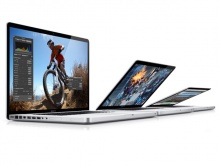'ZDNET Recommends': What exactly does it mean?
ZDNET's recommendations are based on many hours of testing, research, and comparison shopping. We gather data from the best available sources, including vendor and retailer listings as well as other relevant and independent reviews sites. And we pore over customer reviews to find out what matters to real people who already own and use the products and services we’re assessing.
When you click through from our site to a retailer and buy a product or service, we may earn affiliate commissions. This helps support our work, but does not affect what we cover or how, and it does not affect the price you pay. Neither ZDNET nor the author are compensated for these independent reviews. Indeed, we follow strict guidelines that ensure our editorial content is never influenced by advertisers.
ZDNET's editorial team writes on behalf of you, our reader. Our goal is to deliver the most accurate information and the most knowledgeable advice possible in order to help you make smarter buying decisions on tech gear and a wide array of products and services. Our editors thoroughly review and fact-check every article to ensure that our content meets the highest standards. If we have made an error or published misleading information, we will correct or clarify the article. If you see inaccuracies in our content, please report the mistake via this form.
Acer TravelMate C200


Acer TravelMate C200
pros and cons
Acer's Travelmate C200 is a convertible tablet PC in a moderately sized casing with one interesting quirk. When you first unpack it, you'll notice the soft front flap that protects the screen and holds in place with a large elastic strap. Pop this off, and it folds neatly underneath the laptop, acting as a heat and shock buffer between your lap and the notebook itself.
As with most convertibles, it changes fairly easily from slate format to something that more closely resembles a classic notebook PC. In the C200's case, this is achieved by releasing a catch on the top of the screen and sliding up the screen on two support struts, which reveals the C200's smallish 85 key notebook keyboard. The display on the C200 is a 12.1" LCD TFT panel of quite good brighness and with decent viewing angles -- a must for a tablet when you consider that you're more than normally likely to hold it at a tilt when in slate mode.
The display bezel also hosts the main power switch and the necessary buttons for tablet functionality, including quick switching between landscape and portrait mode. Just underneath the power switch lies a biometric fingerprint sensor used to lock the tablet down for security purposes. The right hand side of the keyboard also hosts individual function buttons for quickly launching Web browsers, e-mail clients and other everyday tasks. The front of the keyboard has a tiny -- and almost useless -- scroll wheel, the unit's speakers, and buttons for enabling and disabling the inbuilt 802.11a/b/g wireless and Bluetooth modules.
Features
The C200 unit we tested with came with an Intel Pentium M 760 processor (2.0GHz on a 533MHz FSB) and 512MB of memory. Video is driven by a NVIDIA GeForce Go 6200 and data is stored on a 100GB Ultra ATA/100 hard drive that's split into two equal partitions on initial bootup -- the suggestion given the partition names is that you store your data on the secondary partition. On the connectivity front, it bears a Centrino badge (it's running on the Intel 915 chipset) with 802.11b, a and g modes covered, as well as Bluetooth connectivity, and for the wired types, a single Gigabit LAN port on the left hand side of the tablet. There's not too much wasted space on the C200; the design considerations of the front and back mean that all the ports sit on the right or left hand sides, and Acer's managed to squeeze in the network port, as well as 3 USB 2.0 ports, a single PC card slot, a fax/modem and even an IR port.
As it's a Tablet PC, it's running Windows XP Tablet PC Edition -- patched to service pack 2 in the initial install -- and has a digitising panel underneath the LCD to work with the stylus that slots into the bottom right hand corner of the system. Other software bundled with the C200 includes Norton Antivirus, Cyberlink PowerDVD, NTI CD Maker and Adobe Reader.
Performance
Tablet PC as an operating system is quite well established in the marketplace, and as a tablet in slate mode, the C200 did little to truly excite us, beyond the biometric sensor that could make it a good match for certain security-conscious vertical applications. In notebook mode, we hit a common complaint with most convertibles, in that the keyboard is quite small and can induce finger cramp rather quickly. Of more concern to us and essentially unique to the C200 was the scroll wheel that sits just underneath the cursor keys. It's a good idea in theory, but in practice it's functionally useless; not only is it positioned badly but we found it to be extremely unresponsive on those occasions when we did remember to use it.
One simple computing area that we felt the C200 was rather lacking was in audio; while the onboard audio chip is no better or worse than many laptops we've seen, the speakers on the C200 produced very tinny sounding audio.
Top ZDNET Reviews
In general computing use, the C200 worked as well as you'd expect most 2.0GHz laptops with 512MB of memory onboard to perform. To get a better handle on the C200's specific handling, we ran Bapco's MobileMark 2005 benchmarking application suite over the C200. However, here we hit major problems, specifically with MobileMark 2005's Reader and Performance testing modules. No amount of patching, rebooting, cajoling, reinstalling the entire system or threatining the tablet with a large mallet would make the application run through to completion on any of our test runs, which makes it difficult to give a quantifiable and reproducible report on the system's true performance.
The DVD testing module of MobileMark 2005 would run, however, and pinpointed one major concern with the C200 -- and possibly a key contributor to its refusal to benchmark otherwise for us. Acer only rates the default 3 cell 22W battery as being good for 1.5 hours of performance. Running MobileMark 2005's DVD suite, with all battery-sapping wireless configurations disabled didn't even manage that, conking out after a pathetic 49 minutes. Our test model came with the optional (and more expensive) 9-cell battery, which juts out in a rather ugly fashion from the back of the tablet. Style issues aside, it did bring the C200's battery performance up to par, lasting 189 in MobileMark 2005's DVD playback test. Simply put, if you're tempted by the C200, by no means skimp on getting the larger battery; it should really be the standard battery.
Acer TravelMate C200
Company: Acer
Price: AU$3,499